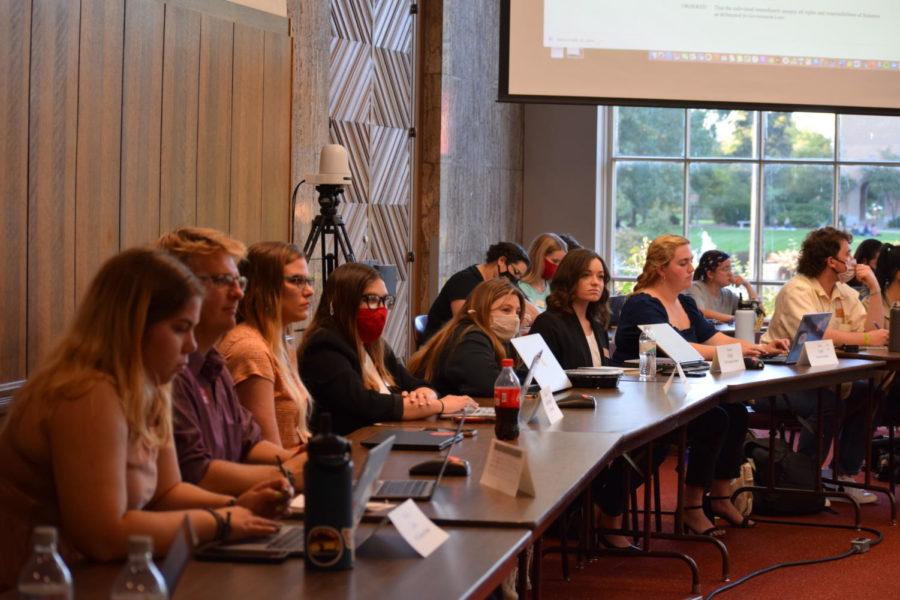Where student fees go
The Student Government Senate listening to Senate nominees declare how they would best represent their constituents Sept. 8.
January 27, 2022
One of the many line items on students’ U-bills includes student activity fees, which the Student Government Finance Committee then allocates to 150 different organizations and a dozen campus-level entities such as lectures and the theatre program.
Students pay $44 activity fees at the start of each semester which equates to about $2.6 million in funds for the Student Government to allocate.
To do this, Student Government uses a document called Priorities and Criteria that contains stands an organization must meet to be eligible for funding. These standards include but are not limited to: having $20 of income per student member, being officially recognized by the Student Activity Center and must not receive or contribute money to a political campaign and/or party.
Finance Director Mason Zastrow, a senior majoring in politics, said it’s also a way to contribute to the campus.
“If you believe that your campus is worth contributing to, deciding how student activity fees are spent is huge,” Zastrow said.
If the organization meets the criteria, a funding request form must be filled out on behalf of the organization. After this is submitted, a Student Government senator works with the organization to have a bill written for the request. The senator introduces the bill at the Student Senate meeting that week where it is given to the finance committee who reviews it. Whether the bill is approved or not is determined at the following week’s Student Senate meeting. This is one of the most common ways to receive funding from the Student Government.
The other most common way to receive funding is the annual allocations process. To determine how much money goes to each organization every year, the Finance Committee has an annual allocation process to determine the amount of money each group receives. Zastrow said the amount of money each organization receives is dependent on how tight the budget is that year.
An organization Student Government has funded in the past is the ISU Dance Marathon which Zastrow said is one of the biggest budgets that they fund due to all the items they buy. They’re allowed to do this because the organization is philanthropic and does not profit from the event.
ISU Dance Marathon received $52,554 for the 2022 fiscal year according to their Financial Director Grace Fangman, a junior majoring in finance.
“If Dance Marathon did not have Student Government funding, we seriously would not be able to put on any events,” said Fangman.
Fangman said most of the money Dance Marathon receives goes toward the renting aspects of any event put on by the organization during the year, with their biggest event being the actual dance marathon. The dance marathon was held virtually this year, so the group hopes to carry the funds over to next year for future events.
Beyond this, the government funds a wide variety of events and clubs, ranging from different ethnic clubs’ food for events to the equestrian club, which is hosting an event that requires a space with built-in stables for the horses they’re using.
The three biggest things the student government does are allocate student fees, create student initiatives and pass along resolutions to the administration, Zastrow said. When asked why he thought it was important to get involved in Student Government and the budget committee, Zastrow said he sees it as a service role.
“We’re given an opportunity to kind of control our money in a way that we don’t get to a lot of the time,” Zastrow said.







